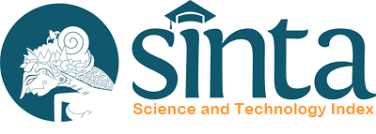Pengaruh Pakan Buatan Kedelai (Glycine max L) dan Kacang Merah (Phaseolus vulgaris L.) Terhadap Pertumbuhan Larva dan Produksi Kokon Ulat Sutera (Bombyx mori L)
DOI:
https://doi.org/10.24259/jhm.v11i2.8298Keywords:
artificial feed, growth of larvae, cocoon productionAbstract
Sericulture or silk farming is one of forest product non wood which product cocoon and then spun become raw silk. National demand of cocoon is high equivalent 900 ton/year. National cocoon production only 5%, and 95% import from Cina. The quality of mulberry leaf is bad and limited in dry season. One way to replace mulberry’s leaf as natural food is provide artificial feed.
The aim of this research is to know the influence in giving artificial feed to larvae and cocoon production as well as to know the best various artificial feed is made from soybean and kidney bean. This research was conducted in silk center of environment and forestry education and training center Makassar from April until July 2019. This research uses Complete Random Design and Data analyzed by using Analysis of Variance (ANOVA)
The best variation of artificial feed for growth larvae are kidney bean (Phaseolus vulgaris L.) and soybean (Glycine max L), the results showed that average of weight larvae and increase of weight larvae, growth index, the average of length larvae are more than larvae indicator, although the Tukey Test stated that it is not significantly different from the indicator. Then for cocoon production, kidney beans heaviest for fresh cocoon, heavy fiber, percentage of cocoon skin and length of fiber nearly same indicator. While soybean, is the best in strength of fiber, however it is shortest of its fiber, weight of larvae is lightest, growth index and percentage of skin cocoon are the lowest.References
Atmosoedarjo,et al. 2000. Sutera Alam Indonesia. Yayasan Sarana Wana jaya. Jakarta
Cahyani, K.D. 2012. Kajian Kacang Merah (Phaseolus vulgaris) sebagai Bahan Pengikat dan Pengisi pada Sosis Ikan Lele. http://digilib.uns.ac.id/pengguna.php?mn=detail&d_id=19032. Diakses pada tanggal 8 Mei 2012.
Chowdhary, S.K. 1996. Rearing of the silkworm, Bombyx mori L.,on artificial diets: Retrospect and prospect. J. Sericologia. 36: 407-418.
Ekastuti. 2005. Pengaruh kadar air pakan terha¬dap pertumbuhan dan produktivitas ulat sutera Bombyx mori. Jurnal Medis Veteriner Indonesia 9(2): 47-53.
FORDA. (2016, 11 Mei). Siaran Pers: Bibit Ulat Sutera dan Murbei Unggul Untuk Memenuhi Kebutuhan Sutera Alam Nasional. Diakses pada tanggal 12 Nopember 2019 dari https://www.forda-mof.org/index.php/berita/post/2702.
Global Invasive Species Database (2011, 20 Januari). Morus alba. Diakses pada tanggal 12 Nopember 2019 dari http://www.iucngisd.org/gisd/species.php?sc=1559.
Koswara,S. 1992. Teknologi Pengolahan Kedelai. Penerbit Sinar Harapan. Jakarta.
Kumaidi A dan Ekastuti. 2013. Pertumbuhan dan Produktivitas Ulat Sutera Bombyx mori yang diberi pakan Ayam Broiler. Jurnal Acta Veterinaria Indonesia 1(1): 1-7.
Lestari C.A. 2019. Preferensi dan Biologi Bombyx mori.L dengan Pakan Buatan Berbahan Campuran Kacang Merah (Phaseolus vulgaris). Skripsi Fakultas Kehutanan Departemen Kehutanan Universitas Hasanuddin. Makassar.
Nurhaedah, et al. 2006. Pengaruh Murbei (Morus spp.) dan Ulat Sutera Persilangan (Bombyx mory Linn.) Terhadap Kualitas Ulat, Kokon, dan Serat Sutera. Jurnal Penelitian Hutan dan Konservasi Alam Vol. III No. 1 ; 65-73, 2006
Ramesh, H.L., Sivaram, V. and Murthy, V.N.Y. 2014. Antioxidant and medical profeties of mulberry (Morus sp.): A review. World Journal of Pharmaceutical Research 3(6): 320-343.
Sulselprov.go.id. (2019, 29 Maret). Pemprov Sulsel Dorong Kembalikan Kejayaan Sutera Sulsel di Wajo. Diakses pada tanggal 12 Nopember 2019 dari https://Sulselprov.go.id/Welcome/post/pemprov-sulsel-dorong-kembalikan-kejayaan-sutera-sulsel-di-wajo.
Sunanto. 1997. Budidaya Murbei dan Usaha Persuteraan Alam. Kanisius.
Yogyakarta.
Winarsi,H. 2010. Protein Kedelai dan Kecambah Manfaat Bagi Kesehatan. Kanisius Yogyakarta.












